The sons of Manco Inca and the succession to the throne The young Manco Inca left behind five sons and several daughters; all minors. His children were:Titu Cusi Yupanqui, Sayri Túpac, Cápac Túpac Yupanqui, Túpac Huallpa and Túpac Amaru, who would have been born in the year 1537. By Inca tradition, one of them would have to ascend to the imperial throne. As they were all minors, the Vilcabamba nobility had to nominate a regent to be in charge of the government of the liberated zone.
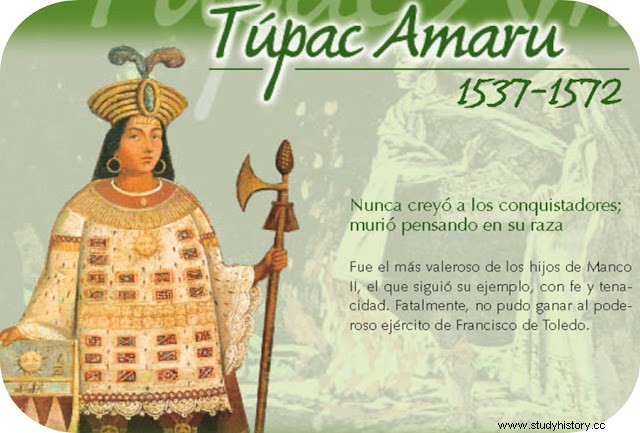
Vilcabamba and its socioeconomic organization Manco Inca Yupanqui, who was never dazzled by the civilization of the Spanish or their fame of being invincible, maintained in Vilcabamba the model of the Inca State and tried to reproduce the architecture and organization of Cusco. The economy in Vilcabamba was based on: 1. The local production, very generous in natural resources of the Rupa-rupa. 2. The collaboration in species offered by the antis of the Amazon. 3. Contributions in groceries and dresses that loyal Quechuas sent. 4. The trade with the Spanish landowners who were settling in nearby areas, on land that had previously belonged to rich curacas. 5. Products earned from escutcheons on the battlefields. 6.The taxes that the refugees, who were persecuted Spaniards, were obliged to pay as a consequence of the civil war; almagristas, gironistas, etc. The black slaves who escaped from their masters also took refuge in Vilcabamba. Several of them served in the armies of the Inca.
The suspicious death of Titu Cusi Yupanqui In one of the days of the first half of 1571, after an altercation with the Augustinian priest Diego de Ortiz, Titu Cusi Yupanqui, who had succeeded Sayri Túpac on the throne of Vilcabamba since 1561, fell ill and died at 24 hours, with a swollen tongue and blood flowing from the nose and mouth. The Augustinian Diego de Ortiz and the notary public Martín de Pando were accused of having poisoned him and died tragically, lynched by the inhabitants of Vilcabamba. Then, the panaca of Vilcabamba girded the imperial tassel on the forehead of Túpac Amaru Inca or Túpac Amaru.
Túpac Amaru and the flags of the reconquest The new Zapa Inca appointed his uncle Huallpa Yupanqui, Cori Paucar Yuayo and Colla Túpac as chiefs of his army. He ignored the Capitulation of Acobamba, expelled the Spanish from Vilcabamba; closed its borders. Túpac Amaru claimed the flags of the reconquest and commanded to proclaim that he was fighting for the restoration of Tahuantinsuyu.
Toledo desperately seeks the surrender of the Inca Given these facts, Viceroy Toledo, who had already received from Spain the fulfillment of the Capitulation of Acobamba, including the bull that authorized the marriage of Quispe Titu, on July 20, 1571, sent the Dominican Gabriel de Oviedo and the lawyer Garci de los Ríos to go to Vilcabamba and deliver those documents to Túpac Amaru and seek a peaceful solution to the rebellion. The envoys arrived in Cusco and went to La Convencion. From the limits of the liberated zone, they sent some messengers to the Inca, asking him to receive them. Túpac Amaru did not give the authorization and ordered the messengers to be executed. Gabriel de Oviedo and Garci de los Ríos returned to Cusco. Toledo, who was in Cusco, made another attempt, sending a threatening letter to the Incas of Vilcabamba asking them to surrender. In March 1572, the bearer of said letter, Tilano de Anaya, as soon as he crossed the Chuquichaca bridge, was killed by the guards of Túpac Amaru.
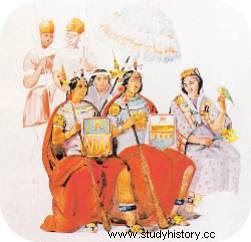 Sayri Túpac, the ñusta Cusi Huarcay and other nobles of her family
Sayri Túpac, the ñusta Cusi Huarcay and other nobles of her familySayri Túpac agreed with the conquerors, while Túpac Amaru,
flatly refused The maneuvers of Francisco de Toledo in Cusco Faced with this report, Toledo's indignation grew. He ordered that the “blood and fire” rebellion be ended. He prepared a powerful army and commanded General Martín Hurtado de Arbieto and Captains Juan Álvarez de Maldonado and Martín García Oñas de Loyola. He got the support of a contingent of warriors from Cusco and Cañaris, enemies of the Tupac Amaru panaca. He had several orejones from Cusco, supporters of the rebellion, arrested. He offered as a war trophy the beautiful ñusta Doña Beatriz, rich heiress to the properties of her father Sayri Túpac. He offered her in marriage to whoever she captured Túpac Amaru.
Toledo's military tactics and Tupac Amaru Toledo divided his army into three fronts. With the main force, General Martín Hurtado de Arbieto would go over the Chuquichaca bridge, the gateway to the Vilcamayu River (now the Urubamba River). Meanwhile, Túpac Amaru fortified Vitcos (current name:Vilcabamba) and Vilcabamba (current name:Pampacona), in order to prevent the reconstruction of the Chuquichaca bridge and stop the advance of the Spanish. But this bridge, using indigenous force and Inca technology, had already been rebuilt by the Spanish vanguard commanded by Captain Juan Álvarez de Maldonado.
The Incas retreated into the capital of Vilcabamba Unable to counteract the enemy, the Inca generals Colla Túpac and Cori Paucar Yauyo had to order the total withdrawal of Vitcos to Pampacona, ready to defend the citadel of Vilcabamba until they lost their lives. Hurtado de Arbieto, his allies Cuyu Túpac, Chillchi and his troops followed them and camped in the old town of Pampacona. They rested, treated their wounded, received more reinforcements and prepared to attack Vilcabamba, the capital. The definitive march began after 10 days of rest and planning of the final attack. They decided to attack on one front. They headed for the royal road, but, as it was full of traps, the combined indigenous-Spanish troop had to advance to the side of the road, opening a trail.
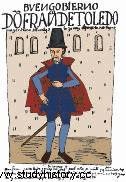
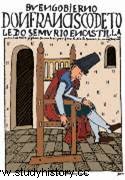
Túpac Amaru orders the city to be burned and flees The Incas, faced with the surprise action, left the fortress and began to retreat. Meanwhile, Arbieto's troops entered Huaina Pucara on June 21. On June 23 he was already in Marcanay, preparing to enter Vilcabamba. Túpac Amaru, knowing that his army was disjointed and that the indigenous Spaniards were already close to him, ordered Vilcabamba to be burned, mainly its palaces and royal dairy farms. He also arranged for his relatives, nobles and captains, with the remaining troops, to escape in various directions to disperse the attention of the Spaniards. Túpac Amaru, with his Coya, Huallpa Yupanqui and a small escort, fled along the road to the manaries.
The taking of Vilcabamba by the indigenous-Spanish On June 24, 1572, the combined indigenous-Spanish troop entered Vilcabamba with a beating drum, finding it completely burned and without inhabitants or food. It was a victory that began at the Chuquichaca bridge and ended at Marcanay, fighting every bend in the royal road with the brave soldiers of Túpac Amaru. The rite of taking possession of the conquered land took place, by order of Viceroy Toledo, in the name of his majesty, the King of Spain by the will of God. Captain Pedro Sarmiento de Gamboa, lieutenant of Toledo, took the royal standard and raised it three times saying:“Vilcabamba! By Don Felipe, King of Castile”. Then, he planted it in the plaza:“...in the presence of the said Governor Juan Álvarez de Maldonado, Master of the General Field, and the Captains Martín García de Loyola and Don Antonio Pereyra and Martín de Meneses y Ordoño de Valencia and Antón de Gatos, Sergeant Major, Juan Ponce de León, Sheriff Major, and the other officers and soldiers, who fired the arquebus and the artillery was fired and Mass was said in the said town and thus remained His Majesty and His Excellency in his royal name by peaceful gentleman of which the said secretary attests...” (note:excerpt from the Vilcabamba inauguration act).
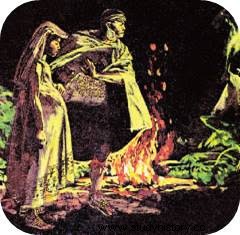 Túpac Amaru takes care of his pregnant woman
Túpac Amaru takes care of his pregnant woman during the persecution he was subdued by the Spanish. The search has begun of the greatest spoils of war Sarmiento de Gamboa reminded the Spanish of Toledo's offer for the capture of the Inca. As soon as he finished saying it, pickets of Spaniards with their Indian helpers went out in different directions to achieve that feat and marry Dona Beatriz. Along the way, the Inca nobles, their wives and their children fell, to whom they gave a cruel lesson. Loyola was lucky enough to find in the Panquies llacta, in the Zapacati area, 6 leagues from Vilcabamba (33 km), a treasure of gold and silver, valued at "one million gold pesos" (Murúa).
The betrayal of curaca Ispaca and Túpac Amaru prison Loyola managed to convince Ispaca to join his ranks. For this act of betrayal, the first victim was Huallpa Yupanqui, who fell prisoner on a "rough mountain." “Three leagues from the Picha river landing, about fifty leagues from the city of Vilcabamba” Túpac Amaru fell prisoner, when he was about to take a canoe and enter the jungle. With him, the rebellion started by Manco Inca in 1536 ended. The Incas of Vilcabamba had maintained a liberated, independent, unconquered area for 36 years. Thousands and thousands of Indians, supporters of both sides, died. But the Incas of Vilcabamba also killed two thousand Spaniards, demonstrating that they were not invulnerable or invincible, and also seriously jeopardized the work of the governors, peacekeepers, and viceroys of Peru. The capture of Túpac Amaru occurred in the early days of August 1572. They took him to Vilcabamba. From there, the victorious troops and their prisoners set out for Cusco at the end of August 1572. On September 4, they arrived in Hoyara, where the Spanish founded the city of San Francisco de la Victoria de Vilcabamba (“Vilcabamba La Nueva”), capital of the Government of Vilcabamba.
The last Inca of Vilcabamba is driven to Cusco “On September 21, 1572, the Inca entered the city of Cusco, before the sorrowful gaze of his people; but not with the anguish of the vanquished but with that gallant arrogance of the man who gloriously fulfilled his historical mission. Tupac Amaru was followed by the coya with his tender children, his grieving brothers and other relatives, then his brave captains, with taciturn but imposing faces. The painful entourage was closed by the large booty that the enemies had taken in Vilcabamba and the embalmed bodies of Manco Inca Yupanqui and Titu Cusi Yupanqui. In addition, as a splendid trophy, the Spaniards brought the famous punchau idol, all gold, inside which was deposited the dust of the hearts of the past Incas” (Edmundo Guillén). “Among the loot collected were found mummies of the father and brother of the Inca and the golden image of the sun or idol punchau that Pizarro, says Toledo, did not manage to discover, no matter how many diligences he did, because the Inca Manco had stolen it. It was made of gold emptied with the heart of dough from a gold box inside the body of the idol and the dough of powders from the hearts of the past Incas with the meaning of the figures it has'” (Rubén Vargas Ugarte, S.J.). Toledo saw that unspeakable scene through the windows of the house of Tristán de Silva y Guzmán and Don Juan Prancorbo. When Túpac Amaru passed under said window, Captain Loyola ordered him to salute him, removing the imperial tassel. The Inca replied that he did not have to do it, he was a simple yanacona.
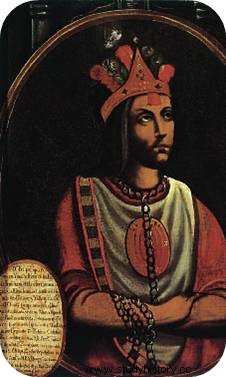 Portrait of Túpac Amaru painted in 1700,
Portrait of Túpac Amaru painted in 1700,on a wooden tablet. He is chained.
His legend about him is very suggestive and begins
saying:"Don Felipe Túpac Amaru Inca...". The death of Tupac Amaru in the square major of Cusco Túpac Amaru was imprisoned in the Colcampata fortress, the former home of Paullu Inca. He was subjected to a summary trial and sentenced to death. On September 24, 1572, Toledo wrote a letter to S.M., telling him:"...what your majesty commands about the Inga, has been done." The execution of the Inca probably took place between September 22 and 23. Tupac Amaru was taken from Colcampata to the execution site, mounted on a mule. The procession made its way before a motley crowd waiting in the Plaza Mayor of Cusco. Tupac Amaru climbed onto the scaffold, with dignified serenity. The crowd began to scream. The Inca raised his hand to ear level and lowered it. At that signal, the people fell silent immediately. During that sepulchral silence, a Cañari Indian cut the Inca's neck with an ax blow. A massive cry shook the air of the Plaza Mayor of Cusco. The last Zapa Inca had died.
The atrocity continues while the trophy is presented to Loyola The brothers and captains of Túpac Amaru suffered various punishments, from death by hanging to the mutilation of their hands. His body was laid to rest at the house of Sayri Túpac's widow. The next day he was taken to the Cathedral of Cusco, where, with the presence of Toledo, the funeral was held. His body, according to some, was handed over to the Dominican fathers to be buried next to Sayri Túpac, in the Coricancha or temple of the sun. According to others, his head was put on a pillory and displayed as a lesson. Since his head was not “... corrupted; on the contrary, it kept his beauty”, had to be buried along with the rest of his body. He left five children:2 boys and 3 girls. One of his daughters, Doña Juana Pilco Huaco, was the direct relative of José Gabriel Condorcanqui. Toledo also arranged for the embalmed body of Manco Inca Yupanqui to be burned. Captain García de Loyola, in effect, was rewarded for the arrest and execution of Túpac Amaru. He married Doña Beatriz, agreeing to Sayri Túpac's parcels. But the bloodthirsty and fearsome character of him did not calm down. Rather, it added another defect:arrogance. “... the political agony of Tahuantinsuyu was slow and painful, and its tragic end was due more to divisions and internal struggles –whatever their deep causes may have been– than to the war power and skill of the invaders. Unfortunately, throughout this first attempt at reconquest, on both sides, more Peruvian than foreign blood was shed and they fought so stubbornly that the Spanish triumph was ultimately preferred to that of the opposing faction. Thus, the inveterate error of simply believing that a handful of Spanish adventurers brought down the Inca Empire in just over an hour, it remains back like a historical trick, to give way to the story of its epic end after a bizarre resistance in the rough breñasincas of Vilcabamba. The first attempt to reconquer Inca Peru, from 1536 to 1572, with tenacious struggle on the battlefields and in diplomatic disputes, thus constitutes one of the most important chapters of his heroic and exemplary deed against foreign domination” (Edmundo Guillén) .
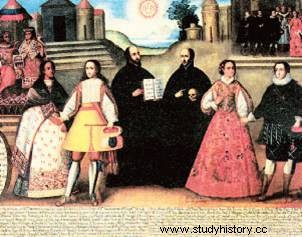 Colonial painting of the marriage of Captain Martín Garcia Oñas de Loyola with Doña Beatriz
Colonial painting of the marriage of Captain Martín Garcia Oñas de Loyola with Doña Beatriz In this way Viceroy Francisco de Toledo fulfilled the prize he had offered
for the arrest of Túpac Amaru.
JULIO VILLANUEVA SOTOMAYOR BIOGRAPHY "Túpac Amaru I"
